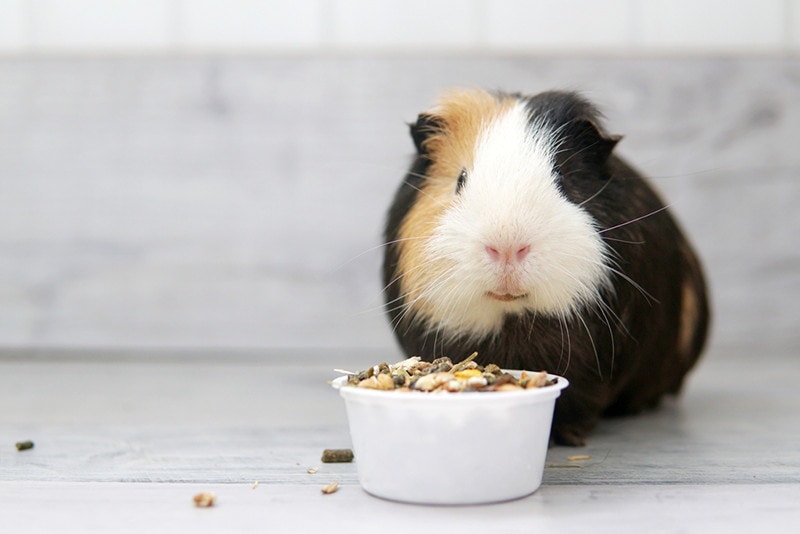Rex Guinea Pig: Pictures, Lifespan, Behavior & Care Guide

Updated on
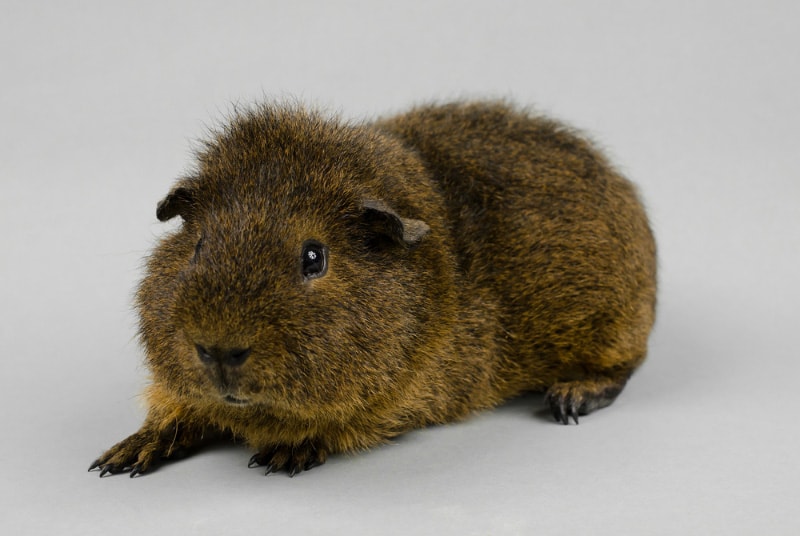
Click to Skip Ahead
If you prefer cute and fluffy over big and scary, you might just fall in love with the Rex guinea pig! This is a friendly, highly intelligent rodent; more importantly, it’s a (mostly) stress-free pet. Take proper care of this fuzzy little guy, invest time in early socialization and supervision, and you’ll get an amazing first-time pet for the entire family. To add to that, the Rex is an affectionate cavy who doesn’t mind being picked up, cuddled, and kissed.
| Size: | Large (8–15 inches) |
| Weight: | 1–3 pounds |
| Lifespan: | 5–8 years |
| Similar Breeds: | Teddy guinea pigs |
| Suitable for: | First-time owners |
| Temperament: | Docile, tranquil, friendly, low maintenance |
The floppy ears, short, easy-to-care-for coat, sweet temper, and calm demeanor have turned the Rex into a cavy superstar. This bud eats tiny portions of food, enjoys grooming, and can live for up to 8 years. Socializing a Rex guinea pig won’t be very hard, either, although it will require commitment. What kind of food should you feed this pet, then? How much will you have to pay for the Rex? Should you adopt a pair or stick with a single guinea pig? Read on to find out!
Rex Guinea Pig Characteristics
How Much Do These Guinea Pigs Cost?
Rex guinea pigs aren’t nearly as big as dogs or cats, but compared to other breeds in the Cavia family, they are quite the heavyweight champs. After all, in Latin, Rex means “king” or “ruler”! Hailing from South America, this is a fairly common, crowd-favored pet, characterized by a short, wavy coat and a curious, gentle personality. That means you shouldn’t have a problem buying one from a local shelter, adoption center, or professional breeder.
More good news: you can get a healthy, well-taken-care-of Rex guinea pig for around $50! On average, shelters charge $50–$80 for a pup, while breeders ask $90–$100 or even a bit higher. Rescued pups may even come for free. The price varies depending on the pet’s age, sex, background, medical records, previous owners (if any), and other things. With these pets, it’s the long-term expenses that count. Healthcare, veterinary check-ups, and vaccines can add up to $100–500 a year.
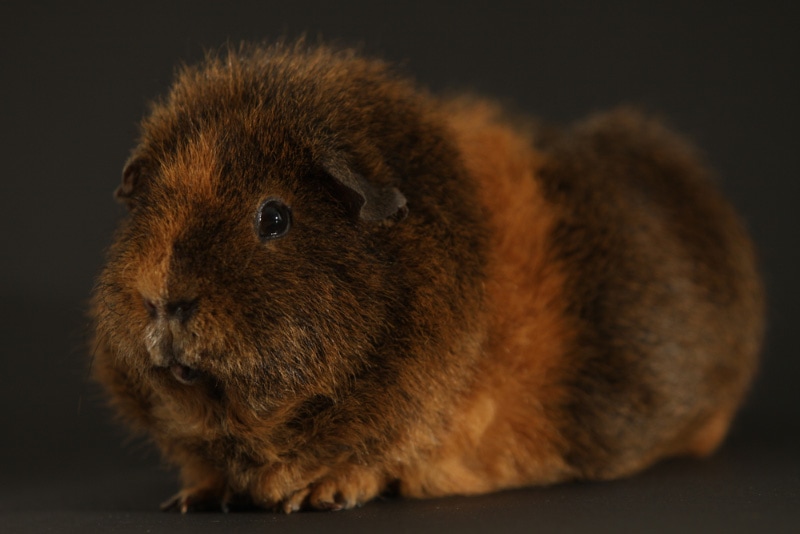
Temperament & Intelligence of the Rex Guinea Pig
In contrast to hamsters and ferrets, guinea pigs are social creatures. In the wilderness, they live in large packs (or, rather, herds) and rely on each other to make it through the day. The same rules apply to the Rex breed: they live their best lives in pairs, while solitude often leads to behavioral problems. When raised alongside fellow boars and sows (that’s what male and female guinea pigs are called), these cavies are more active and engaging.
Also, while every single pet is different, in general, Rex guinea pigs love being around humans and enjoy their fair share of petting. So, should you bring home two pets instead of one? The answer is yes, as that’s what they’re used to in the wilderness. We highly encourage you to put the well-being of the pet first. For this exact reason, it’s against the law to buy or adopt just one guinea pig in Switzerland.
Do These Guinea Pigs Make Good Pets?
The short answer is yes. In the right hands, the Rex can be a near-perfect pet. It’s not clingy, needy, or hard to take care of. On top of that, it’s well-suited to the life of domestic animals and doesn’t take long to warm up to human parents. The Rex pigs are a great choice for first-time single owners, seniors, and busy families that want to adopt a docile, intelligent, and I-don’t-mind-being-alone type of pet.
However, if you have kids in the house, make sure they know how to “handle” such a tiny creature. Children often see hamsters and guinea pigs as toys and can end up (accidentally) hurting the poor buds. On the bright side, once they learn the basics, these cavies will quickly become their favorite fuzzy friends. The only downside to Rex guinea pigs is that you’ll have to adopt at least two, and your wallet might not be very happy about that!
Does This Guinea Pig Get Along With Other Pets?
Ideally, if you have a dog or a cat in the house, you should keep these pets in a separate room. This is especially true for the canine or feline breeds with a strong prey drive. While kids see them as fluffy toys, the bigger, stronger predators think of them as potential prey. If you raise a guinea pig and that other animal together, most likely, they will get along just fine (or, at least, tolerate each other’s presence).
That can be achieved via early socialization and constant supervision. On the downside, you can never be 100% sure that the Rex won’t suffer from the hands (or, rather, teeth and claws) of the dog or cat.
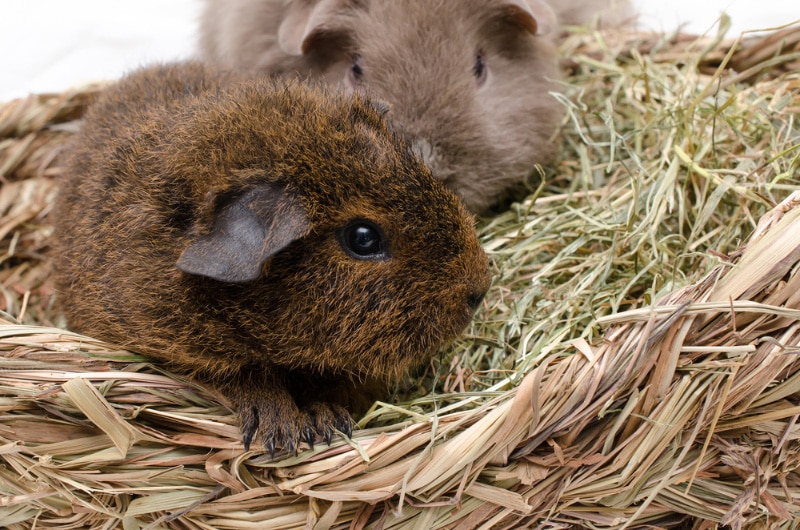
Things to Know When Owning a Rex Guinea Pig:
Food & Diet Requirements
Pellets mixed with some leafy greens and occasional veggies as treats—that’s the best diet for the Rex. With this combo, you should be able to cover the pet’s nutritional needs (calories, vitamins, and fiber for proper digestion). As for fruits, they’re not the best food for Rex guinea pigs because of the dangerously high sugar content. So, only use them as occasional treats and in very small portions. The pet’s daily diet shouldn’t include any seeds or nuts, either.
The same goes for low-quality commercial food: it’s rich in artificial flavorings and colorants that can be hard on a cavy’s stomach. Fresh and raw (not treated) Timothy hay mixed with high-fiber hay from premium commercial pellets is the way to go for Rex. This is important: guinea pigs can’t produce Vitamin C; they can only get it from veggies, pellets, and other food. Lastly, make sure the pet has access to fresh water (changed daily). Drip bottles are perfect for that.
- Hay and pellets as the main sources of nutrients
- Plenty of fresh water, available 24/7, changed daily
- Vegetables (a cup or so) and fruits (only as a rare treat)
- Younger Rex pigs need calcium for steady growth
- For older guinea pigs, Vitamin C is more important
- They can get it from kale, parsley, lettuce, and mustard greens
- A healthy balance is the most important thing here
Habitat & Enclosure Requirements
According to the Humane Society of the United States, a guinea pig’s cage should start at 7.5 square feet. And, since the Rex is a fairly large breed, you should opt for 10–12 sq. ft. If you put two pets in the same cage, think about making it twice as large (10.5 is the minimum size requirement by the HSUS). For three and four pets, 10.5 and 13 square feet is the least you can do. These rodents hate to be cramped up and like to have some “room for maneuvers”.
To make sure they can exercise in peace, consider investing in an enclosed run. And don’t forget to pack the cage with bowls (for the food and water), some toys to keep the fur baby entertained, and bedding for comfort. A quick note: glass aquariums are a BAD idea for these pets! Also, while Rex guinea pigs are clean animals, you’ll still have to clean the litter box (at least once a day) and replace or wash the bedding.
Exercise & Sleeping Needs
Is stretching their legs important for Rex guinea pigs? Absolutely! They need up to three hours of exercise per day, and running around in a large enclosure is the best workout for them. As social creatures, Rex piggies enjoy spending time with each other, fooling around, and learning new things. To make life more exciting for them, you can use toys of various sizes and shapes. They do a great job of keeping these buds physically and mentally stimulated.
It’s not recommended to buy an exercise wheel for the Rex, though, as it could put unnecessary pressure on its limbs and trap the pet. So, consult with a veterinarian before buying any toys/equipment. This way, you’ll get to keep things interesting by introducing new toys and gear while protecting the cavy from injuries and health problems. As for their sleeping needs, Rex guinea pigs only need 4–6 hours of shut-eye, often broken into dozens of short naps throughout the day.
Training
Rex guinea pigs don’t need to be trained like dogs. By default, they are smart, docile, and trouble-free pets. You can, of course, try to teach them some moves, but that will take time and patience. We’re talking about stuff like spinning, pushing something, and even jumping through a hoop. If you put your mind to it, you might even be able to teach the pet to respond to its name (come running when you call it). Still, don’t expect any dog-level tricks.
Instead, try to litter-train the cavy. This way, it will be much easier to keep the enclosure clean. Sadly, it won’t be easy to get the pet to do its business in the same spot.
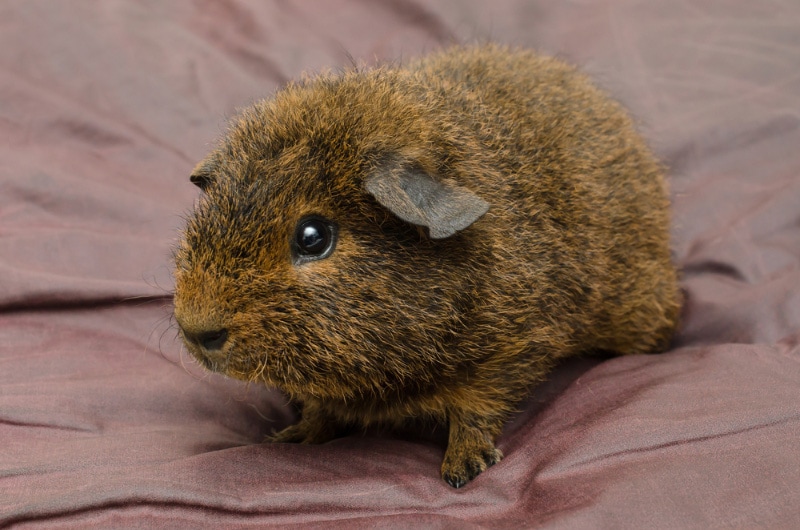
Grooming
The short, hardy coat requires minimal grooming. Occasional brushing (once a week, using a soft-bristle brush) will be enough to keep it in proper shape. Next, Rex guinea pigs aren’t big fans of bathing: a single bath once in 2–3 months is what you should aim for. The toenails do require regular care, though. They grow really fast and can turn into a big problem for the pet if left unattended.
This mostly applies to older, less active pets. And what about dental care? If you keep the pet’s teeth “busy” with food, there will be no need for brushing or professional cleaning. That’s why premium-quality and high-fiber hay is so important. If the Rex piggies don’t eat enough of it, the teeth will keep growing, causing various health issues. And don’t forget about the grease gland: trim the fur around it, treat the grease with coconut oil, and wipe it all away.
Lifespan and Health Conditions
Despite the miniature size, the Rex is a tough, healthy guinea pig. It lives for up to eight years and doesn’t need you to spend big bucks on meds and treatments. That said, this pet does have a few medical conditions to look out for, mainly pneumonia, diabetes, and scurvy. Here’s a quick look at the most common serious and minor health issues for this breed:
- Ingrown nails
- Overgrown teeth
- Ear infections
- Flystrike
- Diabetes
- Diarrhea
- Vitamin C deficiency
- Respiratory infections
- Tumors
Male vs Female
If you just adopted a Rex guinea pig, and it’s walking around the house like it owns the place, it’s a male. The boys are a bit more “cocky”, confident, and inquisitive. They’re bigger, too (2–2.5 versus 2.5–3 pounds), and often show signs of aggression toward their peers. The girls, in contrast, tend to be a bit more docile. In this regard, the Rex breed is exactly like other guinea pigs. The gestation period for females is around 69 days but can also last for 59 days or up to 72 days.
As for the number of pups in a litter, 2–4 is the most common size. To avoid unwanted pregnancies, neuter the male. Do that at least six weeks before adopting the bud; otherwise, it might still be fertile.
3 Little-Known Facts About Rex Guinea Pigs
1. They Grow Nails Like Nobody’s Business
Rex Guineas are self-sufficient, easy-to-care-for pets, but their nails grow very quickly. To clarify: the average cavy’s toenails need to be clipped once in 1–2 months. But if you own a Rex, you’ll have to do that at least twice as often. Even if you skip a single trimming session, the nails will grow into the flesh, and the poor thing will be in a lot of pain. More importantly, the ingrown toenail can cause inflammation, swelling, and infection.
Guinea pigs rely on their owners for security, shelter, and food. In contrast to rats and mice, they don’t bite their own claws or use them “in action”. And burrow digging alone is not enough to keep the nails short.
2. The Rex Pigs Have Been Around for More Than 5,000 Years
All guinea pigs trace their roots back to South America, and Rex is no exception to that rule. More than that, it’s been domesticated for approximately five thousand years. Now, the term “guinea pig” is mostly used by scientists; professional breeders tend to call them “cavy”. Next, these rodents have nothing to do with Guinea (African region). They don’t have any close ties with piglets, either.
Back in the day, the Rex cavies were bred as a source of food. Today, they are mostly used as pets. Rex guinea pigs were brought to Europe by the Spanish in the 1530s who found them in the Andes.
3. These Buds Lack Guard Hair Due to a Mutation
Rex guinea pigs are born with a recessive gene that prevents the hair from growing into long fur (no guard hair). The gene keeps it short, dense, and coarse. This is something the Rex breed has in common with another cute guinea pig—the Teddy guinea. But Teddies have a much softer, plush coat that makes them look like tiny bears (yes, hence the names). The Rex, in turn, rocks curly whiskers for extra cuteness.

Final Thoughts
Looking for a tiny and adorable fur baby to join the family? Then you’ll be pleased by the Rex guinea pig’s friendly, cheerful, and easygoing nature. For a first-time owner, adopting a pet can be a bit stressful. And, while these cavies can be a lot of work (the enclosure won’t clean itself), you won’t have to spend hours on maintenance. Besides, they can be very affectionate and rarely shy away from cuddles. That said, interactions with children should always be supervised.
The same goes for other pets in the house: it will take effort to make dogs and cats befriend the Rex bud. Also, please keep in mind that guinea pigs are NOT solitary creatures. They prefer to live in groups and won’t be happy when locked up in a cage all on their own. That’s why it’s highly recommended to adopt a pair. If you’re ready to take full responsibility for two little buds, the Rex guinea pigs will be a great choice for you!
Featured Photo Credit: PHOTO FUN, Shutterstock



